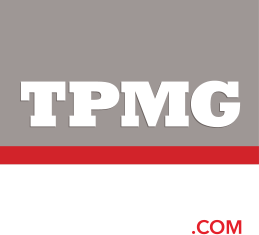Fiber-optic laser cutting’s high-powered beams slice through tube, pipe and sheet; MARSHALL ARNDT offers tips for using the technology reliably and efficiently

October, 2023- FACETIME: Fiber-optic laser cutting’s high-powered beams slice through tube, pipe and sheet; MARSHALL ARNDT offers tips for using the technology reliably and efficiently
Q: What type of parts are best suited for laser cutting?
A: Fiber-optic laser cutting has a truncated wavelength that is readily absorbed into metals, resulting in greater cutting speed and efficiency. Some materials are very difficult or impossible to cut using less technologically advanced methods due to their shape or mechanical qualities. Laser cutting can handle multiple shapes and highly reflective materials, making it suited for aluminum, mild to high-strength steel, stainless steel, brass, copper or bronze. Light-emitting diodes produce a focused beam of light, which heats the material above its melting point to create the cut. In the same step, high-pressure nitrogen sweeps the particles of molten metal out of the kerf (the area of the material that is burned away at the focal point of the beam). The absorption of the fiber wavelength and the higher power density created by the focused beam accelerates the cutting speed for materials that are less than 1/8 inch thick. Fiber laser can cut thicker materials at a fast speed, but the sweet spot with the most valuable benefits in comparison to CO lasers is the 1/8-inch-and-under range. At Sharpe Products, machine operators cut rounds, squares, rectangles and open profiles, up to 6- inch OD, as well as angled cuts on multiple sides or edges. Our multiaxis 3-kW laser-cutting system can create complex three-dimensional part profiles. With a robust operating system, this equipment can create slots, notches, copes and custom hole patterns, either before or after bending.
Q:Are there limitations to laser-cut parts?
A: The cut specifications can be adjusted by raising or lowering the focal point of the beam from just above the surface of the plate, at the surface or just below the surface. A 4,000-watt laser can cut up to 0.75-inch-thick metal. A 6,000-watt laser can accommodate an additional 1/2 inch. One of the greatest advantages of using a laser is that it can create just about any shape required, with few limitations—as long as the size of the part fits within the clamp and in the machine cabinet. Additionally, the size of the shape being cut can easily be adjusted on the machine, without additional tooling. Precision is better as the laser beam does not wear during the process. There’s also less likelihood of warping the material being cut because the beam hits a small and very targeted portion of the metal. Unlike many mechanical cutting processes, fiber lasers produce an extremely tight focal spot diameter that can be up to 100 times smaller than a CO laser, creating hole sizes significantly smaller than the thickness of the substrate.
Q:Which industries rely heavily on laser cut parts?
A: Many manufacturers request laser cutting due to the ease of processing parts. Industries such as aerospace and automotive often choose laser cut parts because of the reliability it offers. Parts made for sanitary environments, such as medical devices and food and beverage equipment, are ideal for laser cutting because it’s precise and reduces the risk of contamination. Additionally, a laser can deliver a cleaner edge, reducing the need to debur or perform other finishing steps. This also helps to streamline secondary operations and mitigates inconsistencies that can arise from the manual process of smoothing edges. Fiber-optic laser cutting is ideal for creating shapes on the body or edges of round, square or rectangular tube or pipe. It also can accommodate complex machining, incorporating multiple manual operations into a single automated process. For example, a tube can be bent and then easily laser cut, sometimes on the same machine. All these factors contribute to shorter setup time and reduced labor costs.
Q:Are there any other benefits?
A: In addition to being maintenance-free with a long service life, fiber lasers are known to be more energy efficient. The laser cutting process is safer than other forms of cutting because the laser beam is secured within a tight lightbox. From a labor standpoint, once a laser is set up to start a job, there is little supervision required by the machine operator until the process is complete, freeing up technicians to perform other tasks.
Marshall Arndt is a manufacturing engineer for Sharpe Products, New Berlin, Wisconsin. http://sharpeproducts.com/











